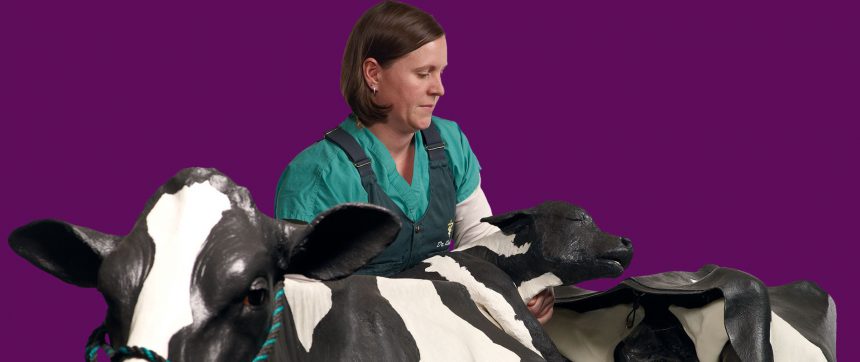
The MSU College of Veterinary Medicine has added three new life-size simulation models to its collection: an equine colic simulator and equine and bovine theriogenology models. Simulation models are anatomically correct likenesses of entire animals or specific body parts and systems. Veterinary students use these models to learn fine motor skills and techniques that they will use to diagnose and treat different medical and surgical conditions. Models like these allow students to practice in a low-stakes, low-pressure environment with scheduling flexibility.
Continuing to build its collection of simulation models is an important piece of the College’s current Curriculum Reinvention process, which is just one component of the College’s Strategic Plan. During Curriculum Reinvention, the College plans to enhance the availability and access to simulation models for veterinary students. This includes allowing first-year students to work with simulation models, which will begin building their confidence and skill sets earlier in their education.
Advancing Education with New Simulation Models